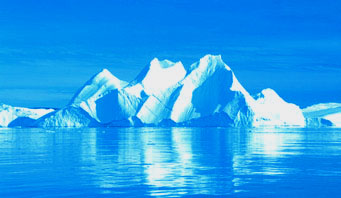Biomes
of the world  visit also Environment
visit also Environment |
|
Biome basics
a biome is an area on the earth's surface that has a certain set of characteristics. There are seven kinds of biomes
in the world: tundra, taiga, temperate forest, tropical rainforest, desert,
grassland, and ocean |
|
Biome
map of the world The Biome map of the world |
|
Biome
map of the world |
|
Biome
map of the world pdf file |
|
Biomes covers tundra, boreal forest, temperate forests, midlatitude grasslands,
chaparral, deserts, tropical savanna, tropical forests, and alpine regions |
| Biomes |
|
Biomes
Biomes, Tundra, Grasslands, Coral Reefs, Tropical Rain Forests, Grasslands,
Oceans, Deserts, Temperate Evegreen Forests, Temperate Deciduous Forests,
Wetlands, Chaparral |
| Biomes -
habitats
the Earth has many different environments, varying in temperature, moisture, light, and many other factors. Each of these
habitats has distinct life forms living in it, forming complex communities of interdependent organisms. A complex community of plants and animals in
a region and a climate is called a biome, desert, tundra, taiga, tropical forest, rain forest, chapparal |
| Biomes of the
world
biome map of the world, tundra, boreal forest, temperate forests, midlatitude grassland, chaparral, desert, tropical savanna,
tropical forests, alpine |
| Biomes of the
world coniferous forests, temperate deciduous forests, deserts,
grasslands, rainforests, shrublands, and tundras |
| Biomes of the
world biomes (bioclimatic zones) are appropriate divisions by which to organize the natural world, because the organisms that live in each of
them possess common constellations of adaptations to them, in particular to the climate of each of the zones and to the characteristic vegetation
types that develop in them |
| Biomes
of the world rainforest, tundra, taiga, desert, grasslands |
|
Biomes
of the world a biome is composed not only of the climax
vegetation, but also of associated successional communities, persistent
subclimax communities, fauna, and soils, ... |
|
Characteristics of the Earth's terrestrial biomes |
|
Ecoregions of North America ecological regions are: Arctic Cordillera,
Tundra, Taiga, Hudson Plains, Northern Forests, Northwestern Forested
Mountains, Marine West Coast Forests, Eastern Temperate Forests, Great
Plains, North American Deserts, Mediterranean California, Southern Semi-Arid
Highlands, Temperate Sierras, Tropical Dry Forests and Tropical Wet Forests |
|
Ecoregions of North America |
|
Ecoregions of North America
Arctic Cordillera, Tundra, Taiga, Hudson Plains, Northern Forests,
Northwestern Forested Mountains, Marine West Coast Forests, Eastern
Temperate Forests, Great Plains, North American Deserts, Mediterranean
California, Southern Semi-Arid Highlands, Temperate Sierras, Tropical Dry
Forests, Tropical Humid Forests |
|
Ecosystems ecosystems, another word for biomes |
|
Ecozones of Canada Canada's ecozones and the general concepts of
ecological classification |
|
Ecosystem services and biodiversity in Europe |
| Habitats/biomes
the Earth has many different environments, varying in temperature, moisture, light, and many other factors. Each of these habitats has distinct life
forms living in it, forming complex communities of interdependent organisms. A complex community of plants and animals in a region and a climate is
called a biome |
|
Introduction to biomes
biomes are the major regional groupings of plants and animals discernible at a global scale. Their distribution patterns are
strongly correlated with regional climate patterns and identified according to the climax vegetation type. However, a biome is composed not only of the
climax vegetation, but also of associated successional communities, persistent subclimax communities, fauna, and soils |
| Major biomes of the world
biomes are the major regional groupings of plants and animals discernible at a global scale. Their distribution patterns are strongly correlated with
regional climate patterns and identified according to the climax vegetation type. However, a biome is composed not only of the climax vegetation, but
also of associated successional communities, persistent subclimax communities, fauna, and soils |
| Rainforests of Brazil & Costa Rica |
| World atlas of
biodiversity
the biosphere, the diversity of organisms, biodiversity through time, humans and biodiversity,
terrestrial biodiversity, marine biodiversity, freshwater biodiversity, responding to change |
| World biomes
a site covering 5 of the major world biomes. What's a biome? Biomes are the various regions of our planet which can best be distinguished by
their climate, fauna and flora |
| World
biomes 2 biomes are defined as "the world's major communities, classified according to the predominant vegetation and characterized by
adaptations of organisms to that particular environment" |
| World
biomes 3 all about the world's biomes, their plants, animals, and climates. A biome is a large geographical area of distinctive plant and
animal groups which are adapted to that particular environment, world biomes, biome, environment, plant, animal, climate, organisms, adaptation,
ecology, ecological relationships, atmosphere, climates, tundra, alpine, steppe, deciduous, grassland, chaparral , desert, savanna, rainforest,
down? |
|
Horizontaal |
|
|
 |
|
|
Home
|
Site Map
|
Email: support[at]karadimov.info
Last updated on:
2011-01-02
|
Copyright © 2011-2021 Educypedia.
http://educypedia.karadimov.info
|
| |
|